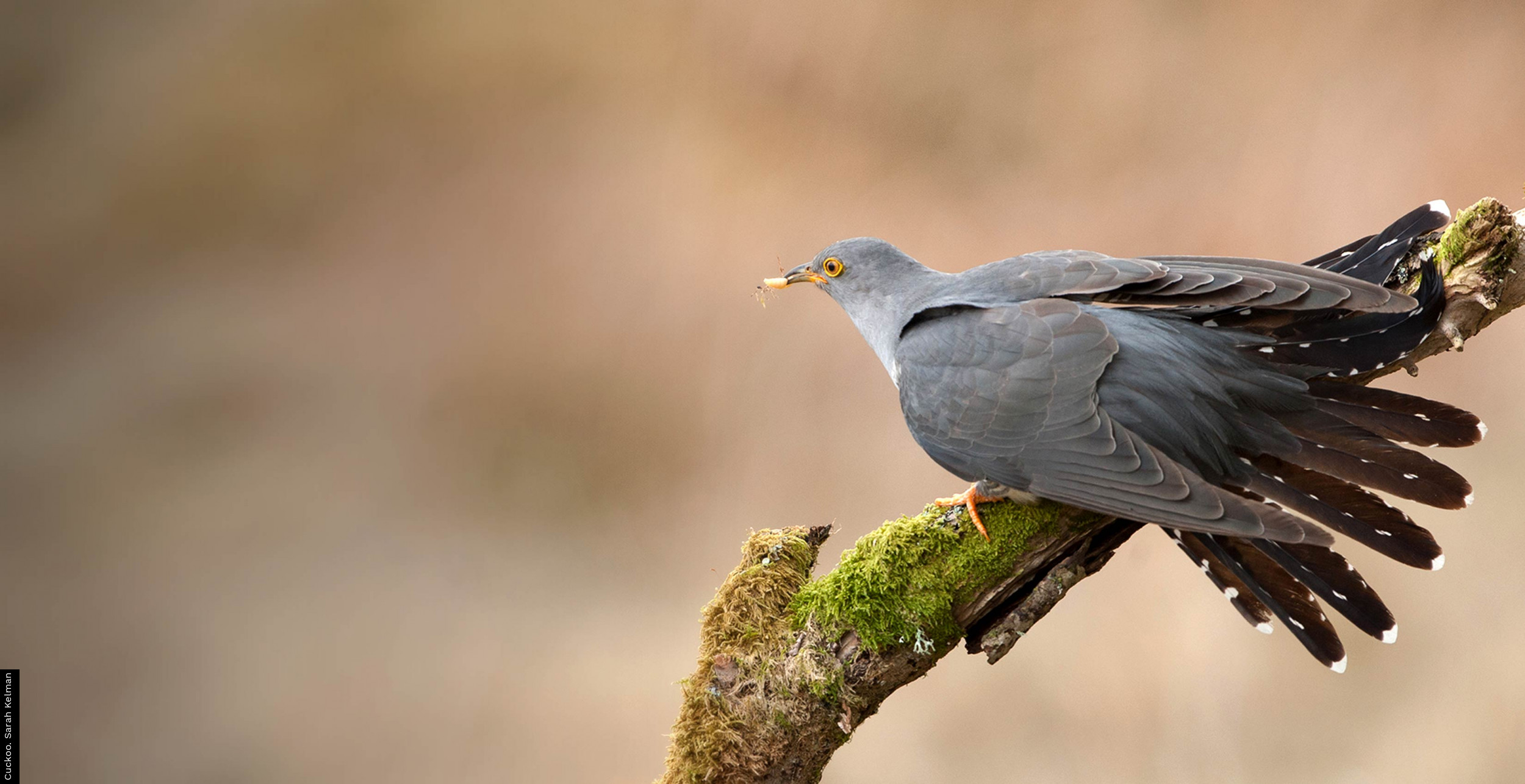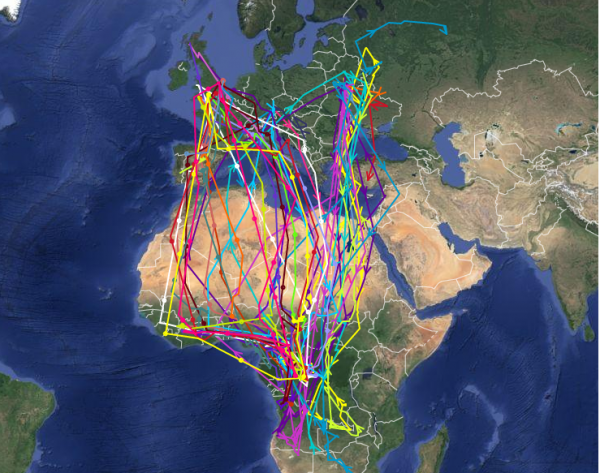International Cuckoo tracking projects
BTO scientists are at the forefront of using new technologies to track birds and have gained great experience during the last decade, deploying devices on a number of bird species, including Cuckoos. The BTO is sharing this expertise and building capacity with partners across the globe.
Mongolia Cuckoo Project
Please consider donating towards the on-going satellite service costs for the cuckoos tagged in Mongolia.
In early June 2019, BTO teamed up with Wildlife Science and Conservation Centre of Mongolia (WSCC), Oriental Bird Club and Birding Beijing to tag cuckoos at Khurkh Bird Ringing Station in north-eastern Mongolia. This was a follow-up to the Beijing Cuckoo Project, which had uncovered the migrations of East Asian Common Cuckoos for the first time.
As with the BTO’s own and previous international cuckoo tracking projects, the project aimed to combine science and public engagement. The team attached satellite tags to four Common Cuckoos, all apparently of the nominate race canorus, which remained around the tagging location for the remainder of the breeding season.
A fifth cuckoo was also tagged – an Oriental Cuckoo, which is believed to be the first of that species to be tracked. It subsequently continued its northward migration for ten days to a breeding territory 1,600 km to the north in the Krasnoyarsk region of Central Siberia. It remained there for just four weeks before beginning its southward migration. The wintering grounds of this species are poorly known, due to identification problems and the secretive behaviour of cuckoos outside the breeding season, but they are believed to include South-east Asia and Australasia.
The field team visited two schools close to the tagging site, in the villages of Binder and Khurkh. The children named three of the birds, including calling the Oriental Cuckoo ‘Nomad’ appropriately enough but even before its onward migration was known. The Mongolia Cuckoo Project was supported by donations from the Oriental Bird Club. You can follow the migrations of these birds on the map here, which is updated daily, or on BTO, OBC or Birding Beijing website or social media.
Previous International Cuckoo tagging projects
Beijing Cuckoo Project
In spring 2016 BTO worked with Birding Beijing to catch and fit satellite tags to Cuckoos in China. The team tagged five cuckoos in the Beijing area in May 2016. Three were males of the local race bakeri, but two were females of the nominate race canorus (the same as UK birds) which subsequently migrated north to Mongolia and Russia. One of these females – named ‘Flappy McFlapperson’ by local school children – gained a cult social media following as she blazed the trail and revealed the spectacular migrations of these birds across Asia, over the Indian Ocean and into south-east Africa for the first time. This is one of the longest migrations documented for any land bird.
The Beijing Cuckoo Project was supported by the Zoological Society of London, Oriental Bird Club and British Birds charitable foundation.
Cuckoos in Germany and Belarus
In 2013 and 2014, BTO was part of an exciting European collaboration with the Landesbund für Vogelschutz (LBV) and BirdLife Belarus (APB) to understand more about the continent-wide movements of the Cuckoo. BTO scientists helped to catch and tag Cuckoos in Bavaria and Belarus and trained local scientists to fit the tags. The project showed that whilst Bavarian cuckoos followed a similar clockwise loop migration path as south-east migrating UK cuckoos, there was a divide within Belarus cuckoos, with some doing the same but some also following a ‘there-and-back’ path to south-east Africa.
Financial support came from the German Agency for Technical Cooperation (GTZ) and The Sound Approach.










Share this page